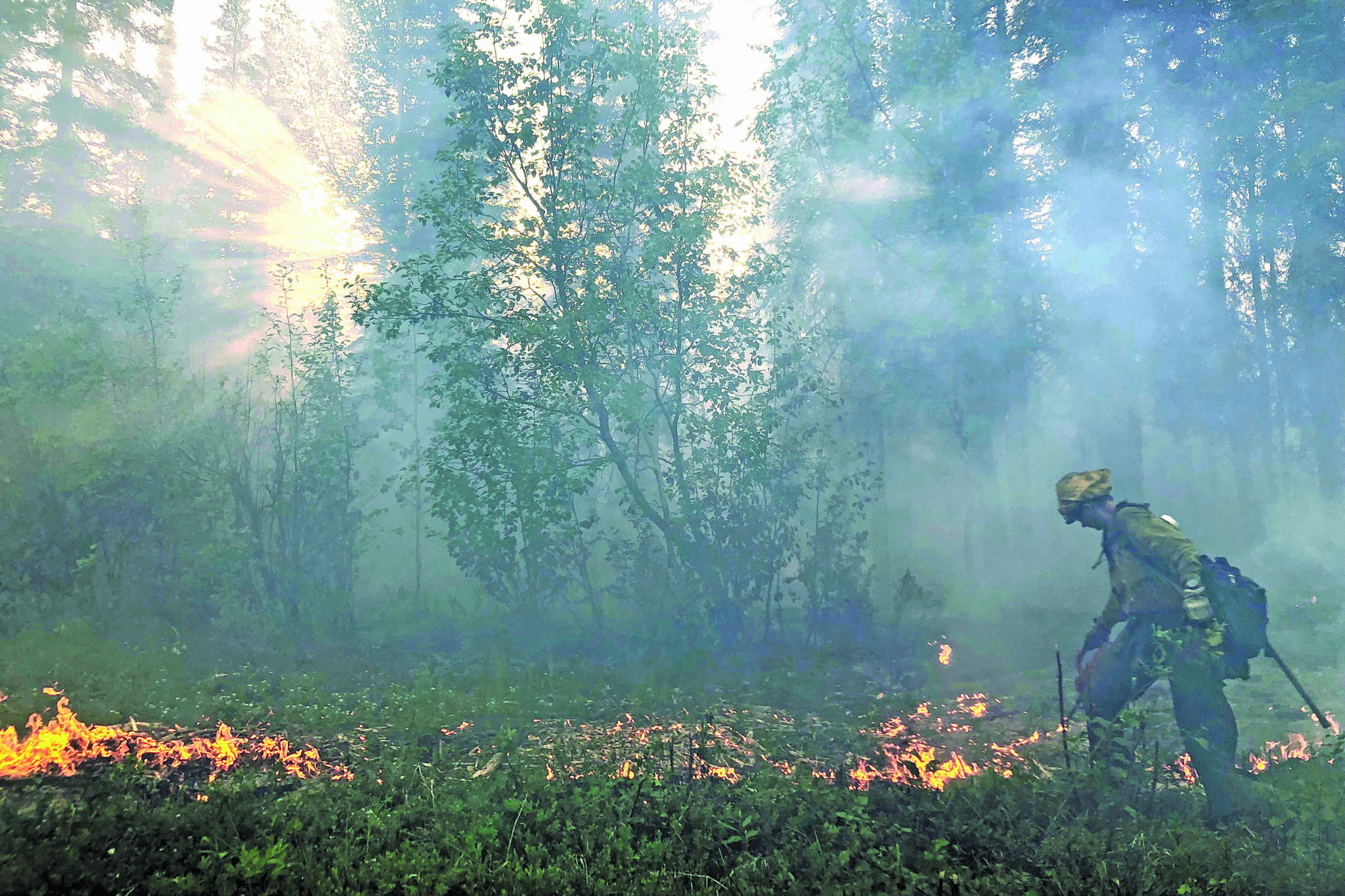All state burn permits — both large and small scale — are suspended as of Friday, May 1, to conserve state resources for combating the coronavirus pandemic.
The Alaska Division of Forestry announced in an April 7 press release that the suspension is in anticipation of the impacts of COVID-19 on Alaska’s wildland firefighting resources this summer.
Last summer, the state battled several large wildfires, including the Swan Lake Fire, which started after a series of lightning strikes ignited a portion of old spruce forest in the Kenai National Wildlife Refuge.
The suspension will help firefighting agencies mitigate some of the significant challenges they’re likely to face this summer, the release said. This includes an anticipated lack of firefighting resources available from the Lower 48 as a result of COVID-19 travel restrictions and quarantine requirements.
In the last 20 years, human activity has caused more than 60% of Alaska’s wildfires, an April 27 press release from the Division of Forestry said. The release says most of the human caused fires are ignited by burn barrels and debris burning in the spring when dead grass and unpredictable winds increase fire danger.
In the past, Alaska has relied heavily on help from the Lower 48 to contain fires. Last year, more than 5,000 firefighters were brought north to Alaska to combat wildfires that burned more than 2.5 million acres. Because of the COVID-19 pandemic, and the subsequent travel and quarantine mandates, firefighter availability could be reduced by 30%, the April 27 press release said.
“The reality is that we don’t know if we’re going to be able to bring resources up from the Lower 48,” State Forestry Fire Program Manager Norm McDonald said in the release. “We can’t count on it, so we have to take other steps and draw up contingency plans to protect our firefighting capabilities. We’re doing what we can to protect our crews and reduce the likely demands on them wherever possible.”
The suspension goe into effect May 1 across the state, except for in Southeast, where there is less risk for wildfire.
“Most of Southeast Alaska is composed of coastal rainforest where wildfires have a very difficult time starting and spreading, unlike the black spruce and boreal forests to the north,” Chris Maisch, director of the Division of Forestry, said in the April 27 forestry press release. “What few wildfires that do occur in Southeast are small and more easily managed by local fire departments.”
The use of burn barrels, the burning of debris piles and any other outdoor burning activity authorized under previously issued permits will be prohibited on all state, private and municipal lands throughout Alaska as of May 1.
Fires for cooking, warming or signaling that are less than 3 feet in diameter with flame lengths no more than 2-feet high are allowed. Commercially manufactured outdoor cooking and heating devices with built-in open flame safety devices are also not included in the suspension.
People or businesses violating the burn permit suspension may be issued a citation.

